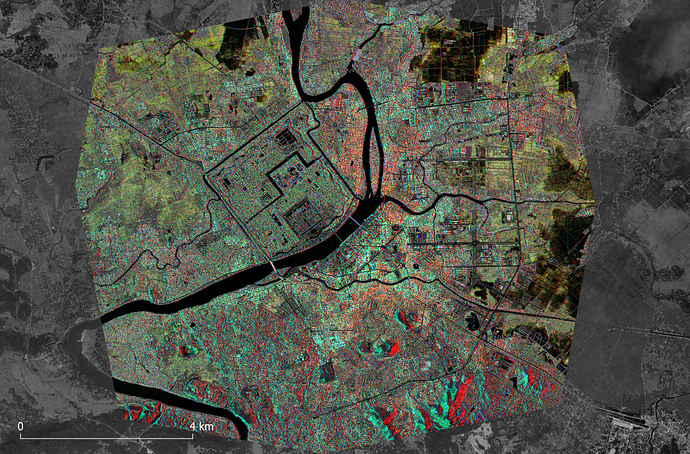I received the first delivery today and just wanted to share some first impressions.
Three SpotLight images of the city of Hue, Vietnam
red = 20191008 descending, small incidence angle
green = 20191009 ascending, small incidence angle
blue = 20191014 ascending, large incidence angle
6 Likes
